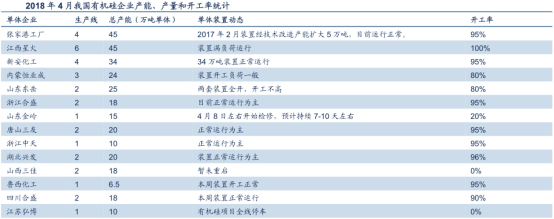What is Silicone?
SiliconeMaterial is important The industrial basic raw material is composed of Si-O bonds as the main chain. Because it has the advantages of both inorganic and organic substances, it has properties such as high and low temperature resistance, oxidation resistance, radiation resistance, good dielectric properties, flame retardancy, film release, Due to its small temperature-viscosity coefficient, non-toxic, tasteless and physiologically inert properties, it is widely used and is known as “industrial monosodium glutamate”.
The entire upstream of the industry chain It issiliconeMonomer, due to its long production process and high technical difficulty, is a technology-intensive and capital-intensive industry , its production level and equipment scale are a measure of a countryOrganic siliconAn important basis for the technical level of the industry. Although currentlysiliconeThere are many kinds of materials, but their production raw materials andSiliconeThere are not many types of monomers, among which dimethyldichlorosilane accounts for more than 90% of the total monomers. Other monomers include phenylchlorosilane and vinylchlorosilane. .
Downstream isSilicone oil, silicone rubber, silicone resin, silane coupling agent and other four major categories of deep-processed products, of which silicone rubber accounts for more than 60%. Terminal applications are in the fields of construction, electronic appliances, textiles, processing and manufacturing, medical and health care, among which construction and electronic appliances account for 34% and 29% respectively.
At present, SiliconeThe current upward trend in prices seems to be unstoppable.

The production capacity growth of monomers/intermediates mainly comes from China.Zhitong Finance APP learned that, Before 2009, the world The siliconemarket is highly concentrated, with the top five manufacturers accounting for approximately 85% of global sales. The major players in the industry have been The operation is relatively standardized, gradually increasing production capacity and avoiding overcapacity.
But as China The number of manufacturers has increased rapidly, from 3 in 2005 to 14 companies at the end of 2012, making the global market increasingly fragmented and making the globalSiliconeProduction capacity has fallen into a crisis of overcapacity, and the global polysiloxane operating rate has dropped from more than 80% to the current level of about 70%. Even in 2016, when there was some improvement, the six domestic companies totaled 1.565 million tons/year of polysiloxane. Alkane production capacity still accounts for 64.1% of the global total production capacity.

At the same time due to technical problems , ChinaSiliconeNot only do enterprises have relatively high costs, but their production is also concentrated on primary monomers or intermediates with low added value. , lack of downstream extension capabilities, resulting in the previous inability to alleviate domestic problems through exportsOrganic siliconemonomer/intermediate excess production capacity, but also Need to import high-endorganic silicone products, which has caused domestic prices to deviate from foreign products since 2009.
The supply situation continues to improve, SiliconeThe industry is welcoming The era of high prosperity. To alleviate SiliconeThe country has improved the situation of overcapacityThe barriers to entry for the siliconeindustry, coupled with the continuous decline in the industry since 2009 The downward trend has led to slow growth in production capacity in recent years.
It is understood thatSilicone The industry operating rate has gradually increased since the second half of 2015. By 2017, SiliconeSeven major companies account for nearly 70% of the monomer production capacity (2.01 million tons): Dow Corning-Wacker (Zhangjiagang Factory), Jiangxi Lanxinghuo, Xin’an The operating rates of chemical industry, Shandong Dongyue, Hengyecheng, Zhejiang Hesheng, and Hubei Xingfa have rebounded significantly, and the single-month operating rates so far have basically reached their limit.
At the same time, the data is displayed Capacity growth over the next three years is also quite limited.


rap: break-word;”>SiliconeSeven major companies account for nearly 70% (2.01 million tons) of monomer production capacity: Dow Corning-Wacker (Zhangjiagang factory), Jiangxi Blue Star Fire, Xin’an Chemical, Shandong Dongyue, Heng The operating rates of Yecheng, Zhejiang Hesheng, and Hubei Xingfa have rebounded significantly, and the monthly operating rates so far have basically reached their limit.
At the same time, the data is displayed Capacity growth over the next three years is also quite limited.

